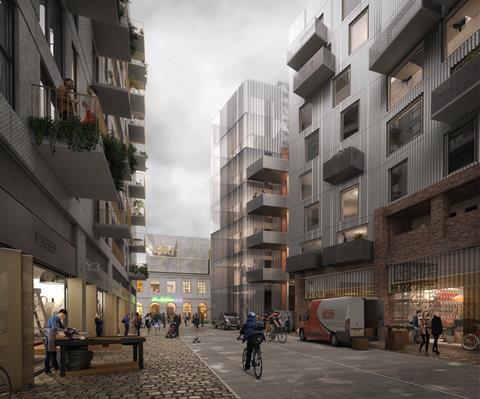South-east London Siemens factory site will also include workspace and improvements to Thames Path
U+I has submitted plans to Greenwich council for a £200m mixed-use scheme in south-east London featuring nearly 500 homes.

The regeneration developer is working with Galliard Homes and the current landowner Royal London to develop a former industrial estate near the River Thames.
The proposed Faraday Works development (pictured), designed by architect Studio Egret West, will turn a former Siemens factory into 492 new homes, 35% of which U+I said will be “affordable”, although a tenure split has yet to be formalised.
The Siemens plant was built in the 1860s, where the company manufactured communications cables until the facility’s closure in 1968.
The scheme is part of the Greater London Authority’s Charlton Riverside Opportunity Area, which will also include 8,400m² of varied workspace, retail units, public space and improvements to the nearby Thames Path.
Following local residents’ feedback, U+I said it would add a new general store to the scheme, as well as a heritage museum within the former wire workshop on the site.
U+I said it would have to demolish the 37 Bowater Road building – once part of Siemens’ complex and said to be the largest factory building in London when built – although the new Faraday Building would replicate the materials and facade “as faithfully as possible”.
U+I hopes to get planning on the Faraday Works in the second half of 2020.
In October, the developer unveiled plans for another major mixed-use scheme in Greenwich that will provide around 1,500 homes.
Working with Dutch architect OMA, U+I is consulting on the Morden Wharf proposal, which is made up of 11 mixed-tenure residential buildings and include vertical green facades.











No comments yet